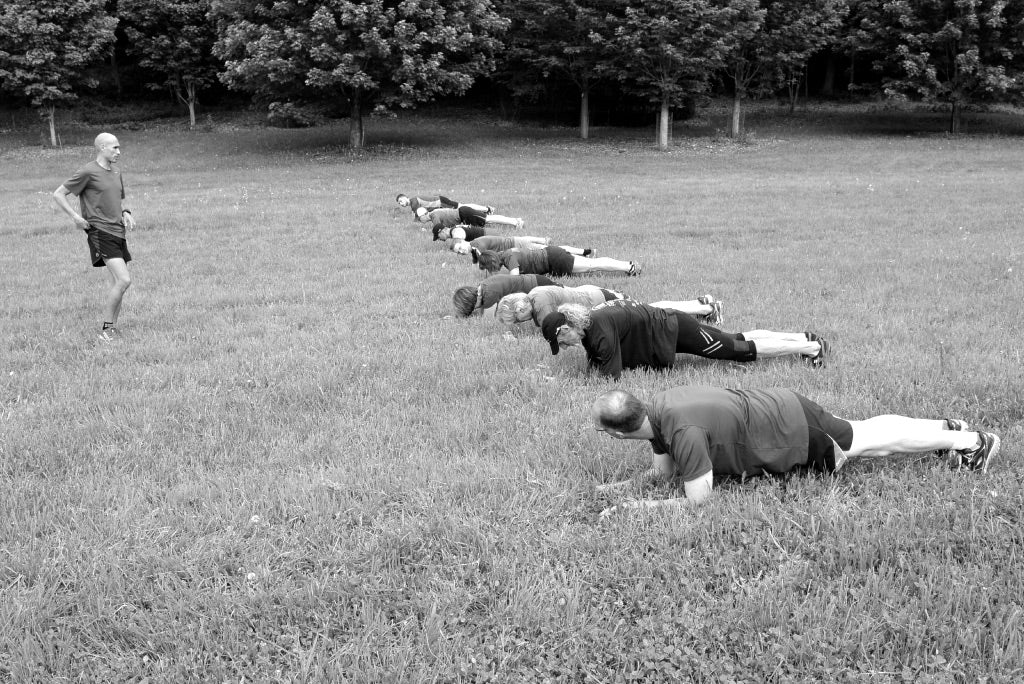by Yassine Diboun
Recently, at a Corporate Wellness Functional Fitness class that I lead through Wy'east Wolfpack, a participant asked me if I ever get injured with running at very demanding and challenging ultra marathons year after year.
Initially I said, "yes, of course", but then I thought a little more deeply about the question. I remember sporadically getting some minor lower leg annoyances over the past 5-7 years, but nothing major by any means, especially with all things considered.
I thought about what may make me different since injury is quite prevalent in ultrarunning. Then a light bulb went off!
I realized that I do a ton of dynamic stretching.
We started our coaching/training/fitness business, Wy'east Wolfpack, in 2012 and since then I have been leading regularly occurring classes where I am stretching, practicing mobility/functional movements/exercises, and giving clinics on proper (trail) running technique. Sometimes I am literally doing dynamic and static stretching routines 3-4 times per day!
Here is the breakdown of my dynamic stretching routine and why it has lead me to being injury free since 2012.
Dynamic Stretching: A routine that I do before any sort of intense workout (i.e. speed workout, functional fitness bootcamp, etc) that involves a head-to-toe stretching with movement regimen.

Yassine's Dynamic Stretching Routine
I do 10 repetitions of the following and the entire routing only takes 5-7 minutes.
The Neck
Starting at the top (head) with neck rotations in both directions I make sure to get a good range of motion. The human body is a chain and everything is connected, so I move from joint to joint.
Shoulders and Chest
Working our way down to the shoulders with arm swings, rotations, back slappers, torso twists, and interlacing the hands behind the sacrum to open up the chest cavity and clavicle area, as well as wrist and forearm stretches.
Hips
Then we move to the hips doing "hip openers" where we bring the legs up and then out in an external rotational movement with good range of motion. Next, do the opposite direction bringing the hips on an outside-in internal rotation.
Legs
Finally working our way down to the ankle joints where we doing some rotational movements in both directions. After that I demonstrate and have others do some light running in place, butt kickers, high knees, skipping in place, hopping on one foot at a time, etc. to loosen up the joints/muscles and get the knees ready for impact.
What this does
This routine gets the body ready for more intense activity for many reasons such as, blood flow/circulation, mobility (range of motion), muscle activation, and flexibility. It also starts to increase your metabolic systems (heart rate, respiratory rate, blood pressure, etc.).
Without getting too scientific, your steady state is where you want to be to obtain optimal performance. That is why you've always heard to do a warm up before activity. It usually takes around 20 minutes to reach "steady state" and being in this zone will decrease injury during runs and workouts.
An example is when I am doing a speed workout. I will jog very easily for about 10 minutes, then do the 5-7 minute dynamic stretching routine, and then jog for another 5-10 minutes which has me nice and loosened up, warmed up, and ready to rip!
Post Workout Recovery
After the workout I prefer to do static holding poses such as quad stretches, hamstring stretches, shoulder stretches, etc. This allows the heart rate to lower, keeps the body from tightening and for the recovery process to begin.
This routine works well in keeping everything "functional" and balanced for a sport that can be very demanding on the body.
When I first got into long distance running I incurred many overuse injuries from IT band syndrome to sprained ankles to achilles tendonitis, and more. When I started learning more about my foot-strike, my gait, arm carriage, breathing, and technique for specific terrain I started seeing less and less injuries. For example, when I was running downhills I was over-striding leaving my ankle and knees in a very vulnerable position and I often paid the price.
In our online course called, "Head for the Hills" where we touch on invaluable techniques for power hiking, uphill running, downhill running, technical trail running as well as some mental cues and exercises that you can use to enhance your running and stay injury-free!
Yassine Diboun has over 75 ultramarathon finishes and 12 finishes at the 100-mile distance.*4 time Western States 100 finisher (top ten finisher in 2013)*3 time HURT 100 finisher*1 time UTMB finisher*Represented the USA in the 2016 World Trail Championships
Along with business partner Willie McBride, Yassine coaches and trains clients all over the country through their community based coaching service called, Wy'east Wolfpack.
Their online course, Head for the Hills, will provide tons of great tips and insight from these two experienced endurance athletes to take your trail running to the next level in 2018!
Check out Head for the Hills, a full online course brought to you by Yassine Diboun and Willie McBride, that is easy to implement into your everyday routine.





